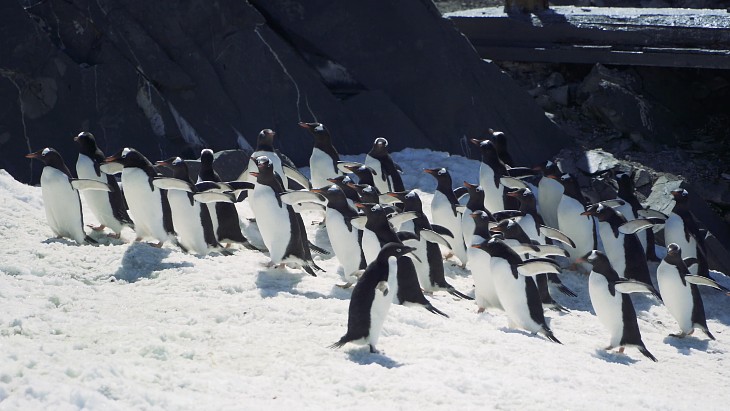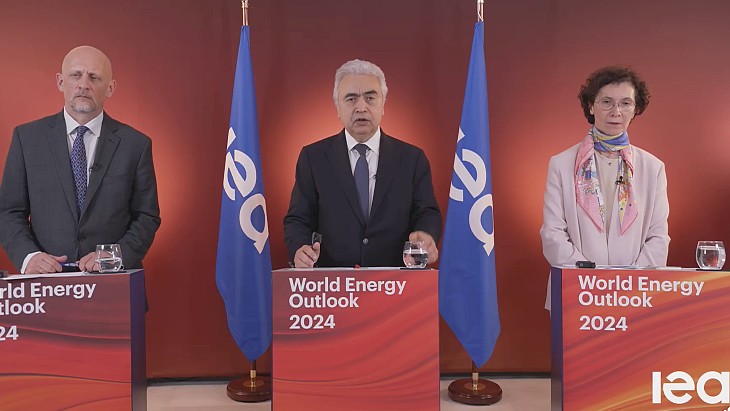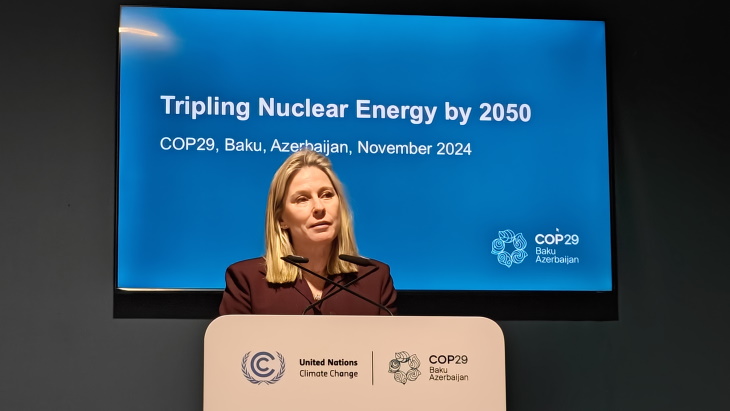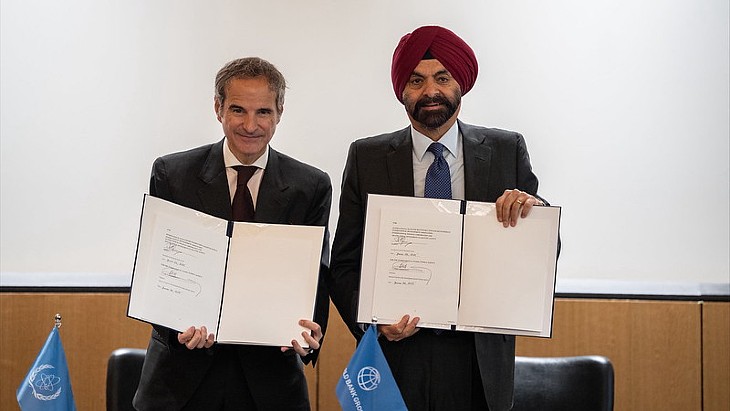China confident of 'new era' for nuclear, says CNNC president
.jpg)
Of the 449 reactor units in operation in 30 countries today, 47 are in China, he noted. At nearly 50 GWe, they place the country in third ranking in terms of installed nuclear generating capacity. China also has 11 units under construction with an installed capacity of about 12 GWe, ranking the country first in the world in that respect, he said. In 2018, nuclear power generated 287 TWh of electricity in China, accounting for 4.2% of national power generation, and Gu is "fully confident" that China will add a further 6-8 units each year over the next 10 years.
"With technological progress, the world is entering an age of clean energy with less dependence on fossil fuel," Gu said. "The shares of natural gas, nuclear energy, solar power, wind power and hydropower in energy production and in consumption are increasing markedly. In some countries, clean energy takes about 60% of the energy mix. However, we think that hydropower is highly restricted by regional resources, and wind and solar power also have natural constraints. They can hardly be the main power producers without a breakthrough in energy storage technology. Also, nuclear power has been demonstrated as an important option in replacing coal-fired power plants on a large scale. Nuclear power is an important baseload option to avoid price fluctuation and the grid risk from renewable energy."
China is committed to cutting its CO2 emissions per unit of GDP by 60-65% from the 2005 level by 2030, he said, and plans to increase the share of non-fossil fuel energy in its primary energy mix to 15% by 2020 and to 20% by 2030.
Since Chinese President Xi Jinping launched the country's new energy policy in 2014, "tremendous changes" have been made, Gu said. "The past three years have witnessed the fastest growth of renewable energy in China, which now ranks first in installed capacity of hydro, wind and solar power, as well as in nuclear power construction."
The country's international cooperation in nuclear power is clear, he said, since it has reactor designs that include French PWRs, Canadian Candus, Russian VVERs and US AP1000s. It is also working on its own design, the HPR-1000, and is developing indigenous equipment supply.
"We have developed the capacity to manufacture equipment for eight to 10 units every year," he said. "At present, more than 85% of the key equipment and materials of our own HPR-1000 can be produced in China."
The HPR-1000, also known as Hualong One, is a Chinese pressurised water reactor design developed by CNNC and the China General Nuclear Power Group. The first HPR-1000 units to be constructed will be Fuqing units 5 and 6, followed by Fangjiashan units 3 and 4, and Fangchenggang units 3 and 4. There are five Hualong One reactors planned for Pakistan - four at Karachi and one at Chashma, of which two are under construction at Karachi. Construction of another HPR-1000 is planned to start next year in Argentina.
The HPR-1000 project is "progressing smoothly", Gu said, adding that Fuqing 5 had entered the commissioning stage and would achieve power operation by the first-half of next year.
CNNC is working on new nuclear technologies, he said, including small modular reactors, nuclear waste transmutation and treatment, accident-tolerant fuel, high-temperature reactors, fast breeder reactors, nuclear fusion technology, and used fuel disposal.
In July, CNNC announced the launch of a project to construct an ACP100 small modular reactor at Changjiang in Hainan province. Construction of the demonstration unit - also referred to as the Linglong One design - is scheduled to begin by the end of this year.
Its HTR-PM, a 200-megawatt high-temperature gas-cooled reactor, can supply industrial heat of above 750 degrees Celsius, he said, and is expected to have "broader prospects" in hydrogen production. The unit will be in operation by the end of next year, "laying a solid foundation for further commercial application", he added. In addition, CNNC has developed the Yanlong DHR-400 pool-type low-temperature reactor in northern China to replace the fossil fuel-fired district heating system. The company is also working with 'Belt-and-Road countries' in nuclear power, uranium resources, nuclear fuel, and the non-power applications of nuclear technology. And it is engaged in the ITER fusion project in the south of France.
International cooperation, he said, can "build consensus and strengthen confidence" in nuclear power.
"The global nuclear industry is moving out of the shadow of Fukushima accident. However some countries have abandoned nuclear power and sharply dropped its proportion in their generation mix," he said. "Developed countries have witnessed sluggish growth of nuclear power - except for six units in Finland, France, the US and the UK, no other nuclear power plant had been built in North America and the EU area for about 30 years. Over the same period however about 100 units were built in developing and emerging economies."

_99697.jpg)







..._58412.jpg)

